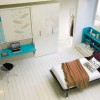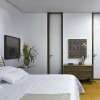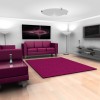Principles of interior design are written by many experts as it is more theoretical rather than practical. So one can easily find many types of interior design principles doc. available on internet. It is the regular subject of many design institutes and universities for the diploma and degree programs. We see this topic differently. As we are working for the betterment and guidance of a layman, so we are presenting these theoretical principles of interior design in a simple and practical way. while acting upon these principles, you must bear in mind that these are not designed for the purpose of theoretical foundation but we worked out on them for an ordinary person who has no excess to the professional interior designers due to some reasons or don’t want to call them, that’s why we use simple and understandable language. Let’s present our work.
Elements of Interior Design:
Position/Size:
The most important principle of interior designing and home decoration is analyzing the position of items that is directly related to the size of items. For this purpose, before deciding you should take a brief look of available space and draw a raw sketch. Now put things according to plan and examine view critically. While fixing major furniture items think about the light effect, fresh air and quantity of items. Do change where it is appropriate and reach a better conclusion. In this regard you may get idea from the available photos on internet or expert opinion available on home decor websites and interior design magazines.
Balance:
Balance is the key of universe and ALLAH (S.W.T) creates and maintains everything of this universe in balance. Like all other fields and areas equilibrium is key factor for Interior designing and decoration. According to theory there are so many types of balance but most important 3 different kinds of balance are stated below:
Symmetrical Balance:
When you fix two same items face to face it’s called symmetrical balance. For example side tables of large bed or two chairs facing each other on dining table can be considered as symmetrically balanced. This is an easy task to achieve as one can easily identify that where balance is disturbed.
Asymmetrical Balance:
It is difficult to observe and complex to maintain this kind of principles of interior design as there is no hard and fast rule for this kind of balance. It is actually a visual weight and eye catching equilibrium. To identify and examine this kind of balance, sense of designing is important and this type of sense developed after long experience.
Radial Type of Balance:
When you enter in a room and feel that this is a focal and central point of room that enhancing the beauty of room. Round dining table and chairs is the best example of radial type of balance.
Contrast:
Contrast is more about color matching and balancing. In this process you should think about the pair colors and put them fairly and somehow equally in setting. Color selection and contrast is not about just wall paint color, but furniture color, lamp shade color, sofa and cushion color, bed sheet and carpet color is also included in contrast. Another topic comes under this heading is choosing bright or light color scheme and this directly related to the personality type of consumer.
Rhythm:
Rhythm is one of the very important principles of interior design and it is about choosing same color with dissimilar gaps. Process for rhythm is to select one color for room and show its different intervals in all accessories like pillows, painting, carpet, bed sheet and walls etc.



